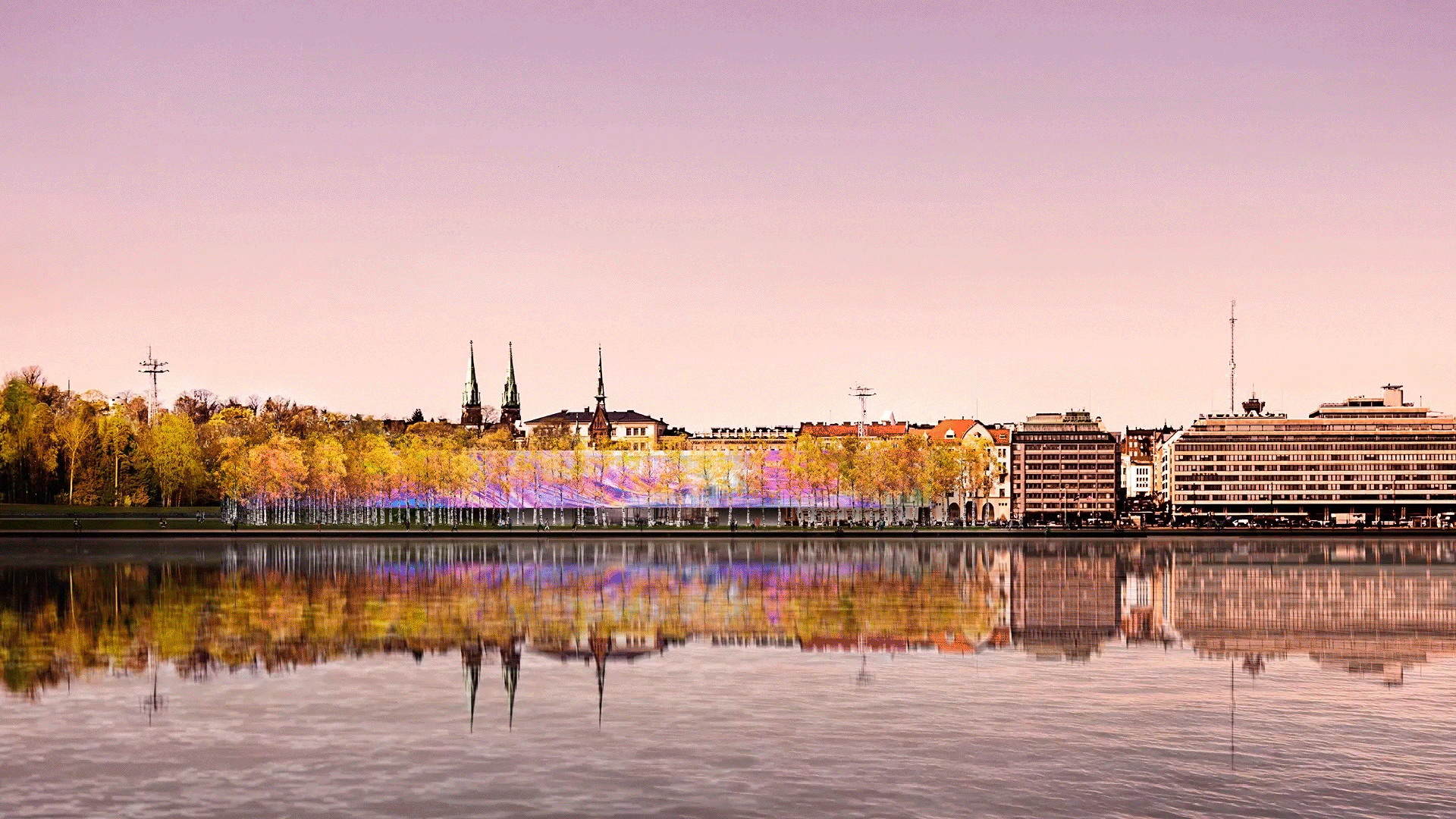Architizer is thrilled to announce that the 2026 A+Product Awards is open for submissions! The clock is ticking — get your products in front of the AEC industry’s most renowned designers by submitting today.
In shaping our built environment, many architects delve deeper than just creating buildings, choosing to also design the everyday objects that furnish our spaces. From coffee tables to door knobs, nothing is too small or too ordinary for an architect to reinvent. But there is one object in particular that seems to capture their imagination more than any other: the pendant light.
Much like architecture, the design of a light fixture calls for a perfect harmony of aesthetics, construction and technical performance. However, it also frees architects to work at a level of detail that is often impossible in architecture, allowing them to decide on everything from the shape of the fixture to the location of each screw.
The resulting designs are works of art in their own right, illuminated sculptures ready for mass production. As you search for the right fixture to light up your space, or contemplate designing your own, check out these seven pendant lights dreamt up by today’s brightest architects:


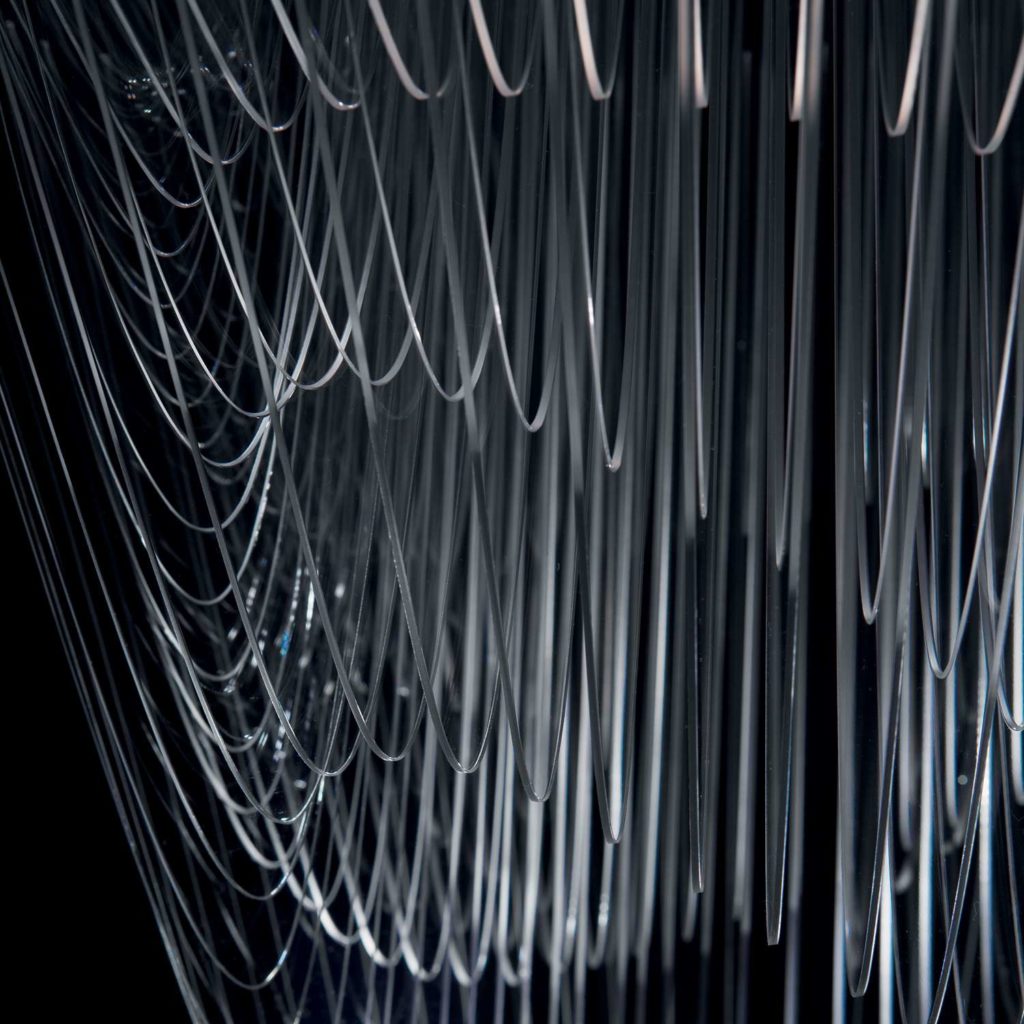
Aria Suspension by Zaha Hadid
Manufactured by Slamp
Aria Suspension is an ethereal pendant light designed by the late Zaha Hadid, a Pritzker Prize winning architect famous for her sculptural buildings. This curvaceous and sophisticated light is a perfect embodiment of Hadid’s design principles.
Each fixture is composed of 50 uniquely shaped polycarbonate fins which wrap around an LED core, providing 360 degrees of illumination. While originally released only in clear and translucent black, a special edition Aria is also now available in metallic gold.

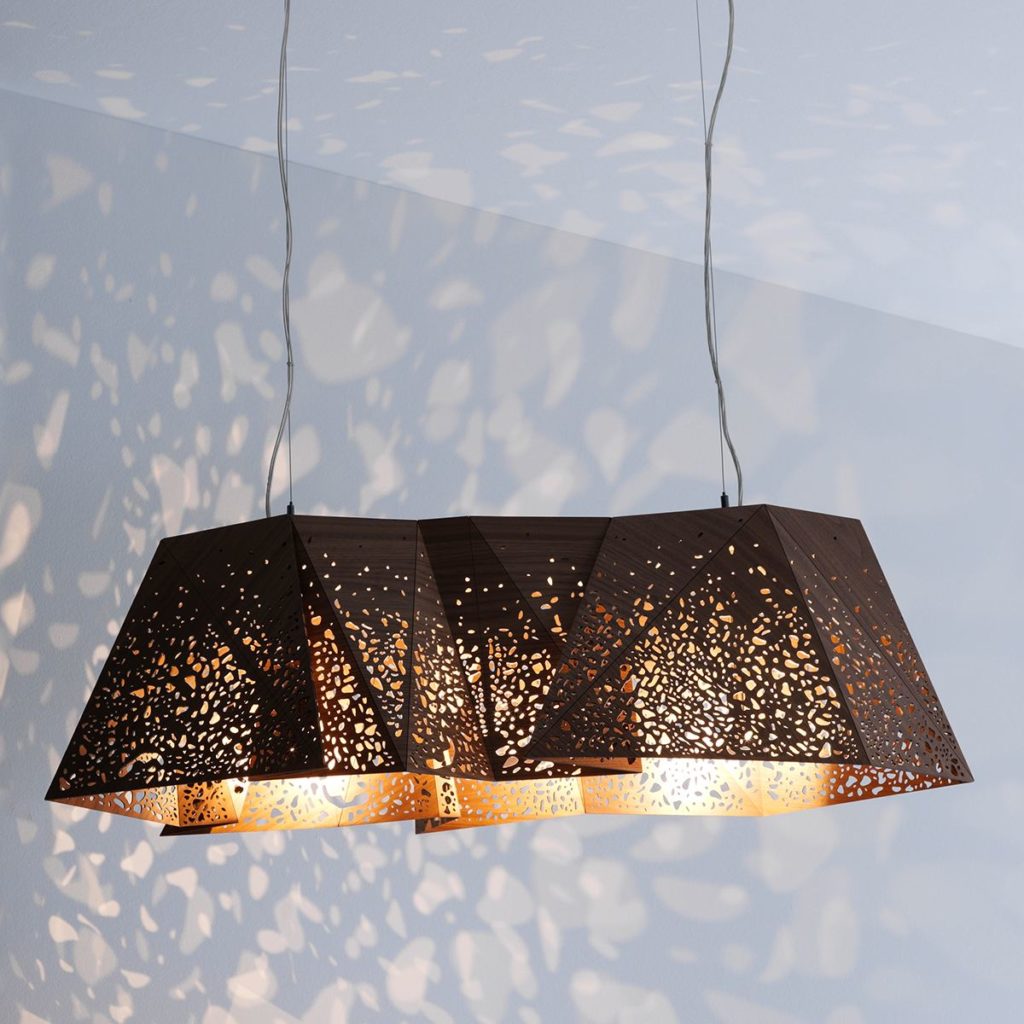
Plywood Chandelier by Steven Holl; images via HORM.IT.
Plywood Chandelier by Steven Holl
Manufactured by HORM.IT
Architect Steven Holl has long been fascinated by the idea of “porosity,” often carving voids into buildings to create interesting patterns of light and shadow. His chandelier, built from a composite material described as a “wood-fabric sandwich,” is no exception.
Superficial laser engravings enabled the ultra-thin wood to be folded into a complex, origami-like form. Meanwhile, deeper perforations, also carved by lasers, allow light to escape in all directions, dappling interior surfaces like sunlight passing through a tree canopy.

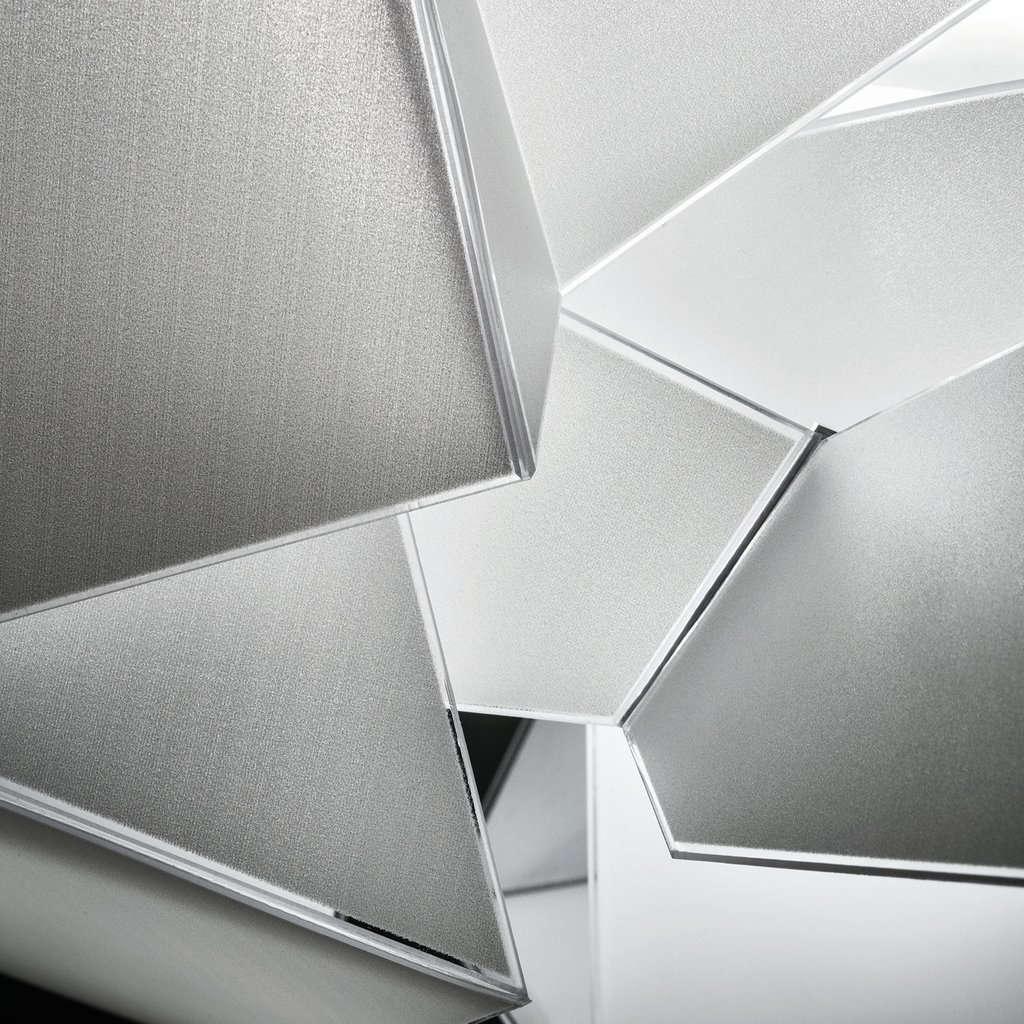
Cordoba Suspension by Daniel Libeskind; images via Slamp.
Cordoba Suspension by Daniel Libeskind
Manufactured by Slamp
Cordoba Suspension is a pendant light designed by Daniel Libeskind, a deconstructionist architect known for bold, angular façades. His design, inspired by “the mysticism of light” in the Spanish city of Cordoba, is composed of fragmented planes of polycarbonate fabric, known as Cristalflex, which diffuse and reflect LED light in multiple directions simultaneously.
Although their complex geometries were generated by algorithms and modeled with computer software, each Cordoba Suspension light is crafted by hand.

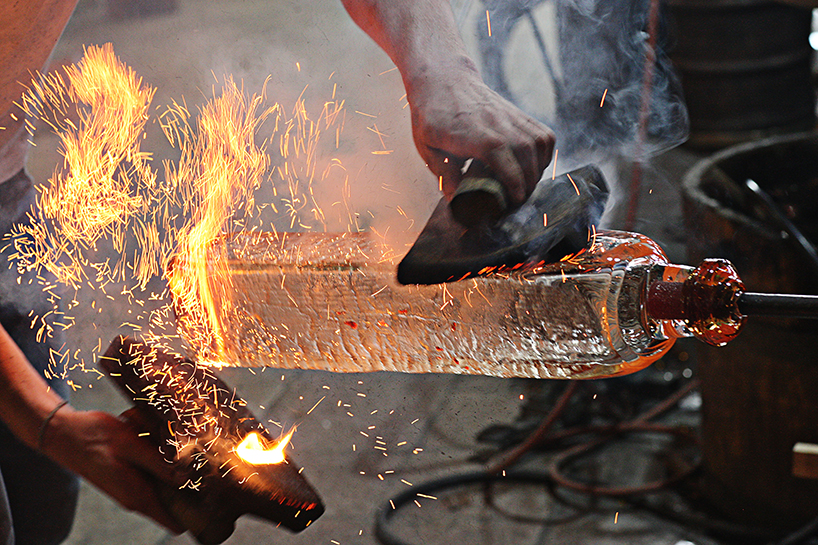

Yakisugi by Kengo Kuma
Manufactured by Lasvit
Japanese architect Kengo Kuma loves wood, a material with deep roots in Japanese architecture. His pendant light collection explores the natural beauty of wood in what he describes as an attempt to capture the “wooden soul” within glass.
Inspired by Yakisugi — the ancient technique of preserving timber by charring its surface — the glass is shaped with wooden molds while still molten, burning the wood and imprinting its organic texture onto the glass. Since the burnt molds cannot be reused, each piece of glass features a unique, crackled finish which is never duplicated.


Cloud by Frank Gehry; images via Belux.
Cloud by Frank Gehry
Manufactured by Belux
Frank Gehry’s whimsical buildings often start as abstract paper models and can go through hundreds of renditions before he gets them right, so it is no surprise that Cloud, his tongue-in-cheek pendant light, resembles a ball of crumpled paper.
But what appears to be a delicate, paper-like material is actually a custom-made polyester fabric that is both tear- and flame-resistant. This fabric, although durable, is designed to retain creases and crinkles easily, which allows owners to reshape their Clouds and ensures that no two lights are alike.


Dot by Foster + Partners; images via Lumina.
Dot by Norman Foster
Manufactured by Lumina
Norman Foster, the head of Foster + Partners, is a master of deception; his sleek designs often belying complex feats of engineering. Take Dot, his minimalistic pendant light, for example. Envisioned as a “disc of light,” the seemingly simple design features two parallel discs held apart by a slender metal stem.
Concealed within the smaller disc is a ring of high-powered LEDs which shine onto the larger, reflective disc through a series of holographic filter lenses. These lenses both amplify and evenly disperse the light, preventing the stem from casting a shadow. The high heat generated by the bulbs is then absorbed by the fluid-filled stem and transferred quietly to a heat-sink hidden inside the larger disc.



Alphabet of Light by Bjarke Ingels Group; images via Artemide.
Alphabet of Light by Bjarke Ingels Group
Manufactured by Artemide
The Alphabet of Light is a hybrid typeface and light fixture series designed by the always innovative Bjarke Ingels Group. Available with both surface-mounting and pendant hardware, these fixtures allow designers to literally draw on walls and ceilings with light.
The alphabet is composed of ten tubular modules — consisting of differently sized lines, curves and junctions — that combine to form an infinite number of configurations. The modules are illuminated internally by diffused LED lighting which can travel up to 16-feet through a series of connected elements. Each module ends in concealed electromagnetic joints which allow them to link together effortlessly while ensuring seamless, shadow-free connections.
Architizer is thrilled to announce that the 2026 A+Product Awards is open for submissions! The clock is ticking — get your products in front of the AEC industry’s most renowned designers by submitting today.


